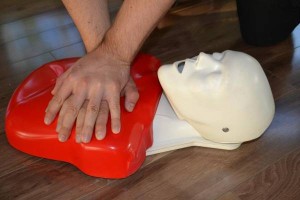An effective CPR is very important for a person who has got a heart attack or having any kind of respiratory problems and unable to breathe. In such conditions, it is really essential to maintain the blood flow into the brain and the heart as soon as possible to save the person’s life. It is often seen that when untrained individuals perform CPR then they often give inadequate compressions. The compression rates are either less in number or are too shallow. Even if a brief time lapse is there in providing compression then it may restrict the normal blood flow again. Several researches and new technologies have been invented and discovered to perform effective CPR that are now a part of training in various CPR courses. In this article we will describe about what are the Different CPR feedback systems that are provided to you CPR programs and about CPR mobile apps.
1. CPR feedback systems provided to you during training in CPR courses.
There are different CPR feedback systems. Operations of the feedback systems are taught as a part of a CPR course. Few amongst these CPR feedback systems are:
a) CPR prompting system: This type of system prompts you when you should start and when you should stop a compression. These are often used for AEDs.
b) CPR feedback systems: These systems are better than prompting systems as these systems give you feedback about how effectively you have carried out the compression. This system gives you command if you need to push harder and will also tell you if you have done a good compression or not.
c) Compression depth feedback: Often during emergency situations it happens that there’s a lot of noise in the vicinity and you are unable to perform the actual CPR as you have been taught during classes. In such cases, this feedback system comes to the rescue. The feedback system measures the depth of each cycle of compression and gives you the idea about how effective your compression is by showing peak to peak feedback of the compression given by you.
d) Rate feedback and idle time system: These systems provide you the information about how effectively you have used the defibrillator as taught in your CPR classes and if you have met the set standards of 100 compressions per minute. Whereas the idle time system gives you information about how much time you have lapsed between each compression and were your compression effective if you have an extended time lapse between compressions.
2. Use of mobile apps for performing CPR – taught as a part of CPR courses.
Your Smartphones now have the feature for installing CPR related apps. These 
With the advancement in technology more methods will come which will help you in doing effective CPR and all such latest methods are a part of the curriculum of the CPR courses
